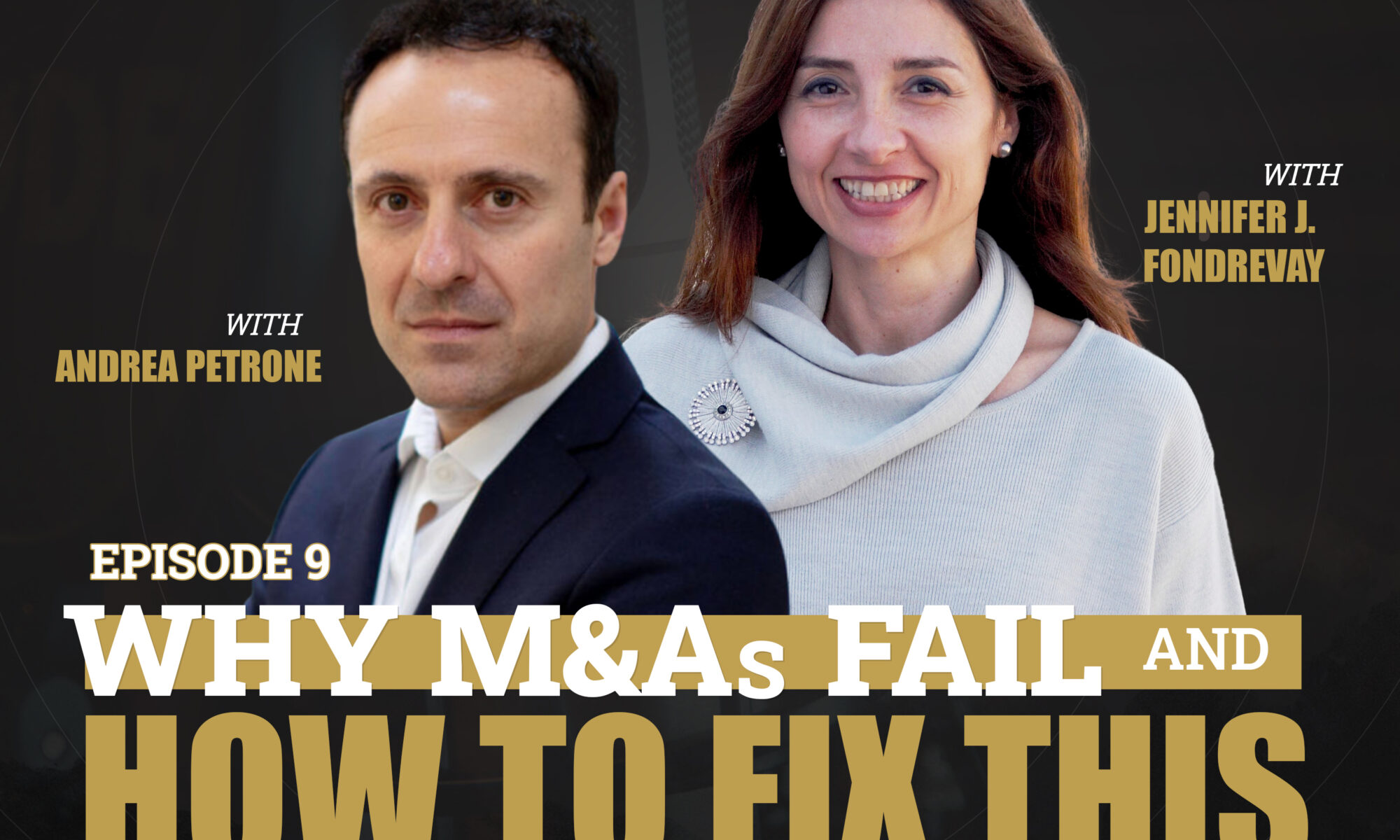One of the primary reasons that a merger may fail is less about strategic, operational, or financial fit. Rather, it may be that the two companies’ embedded cultures cannot be easily aligned. Some issues may surface during the due diligence phase but identifying how the cultures are going to work together is paramount.
In this podcast with Andrea Petrone, Jennifer discusses:
- The mutual benefits in employing humility, respect, and understanding.
- Why there needs to be acceptance of the change occurring within the workforce.
- How to retain critical talent in the workplace.
- Why it is important to lead by example.
Read the full article about the interview here: Why M&As Fail and How to Fix This














